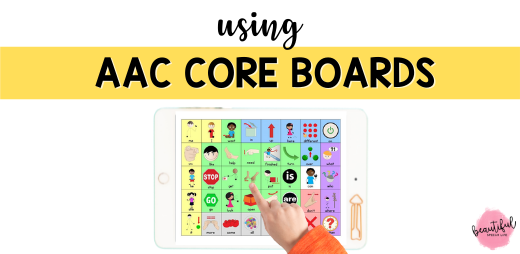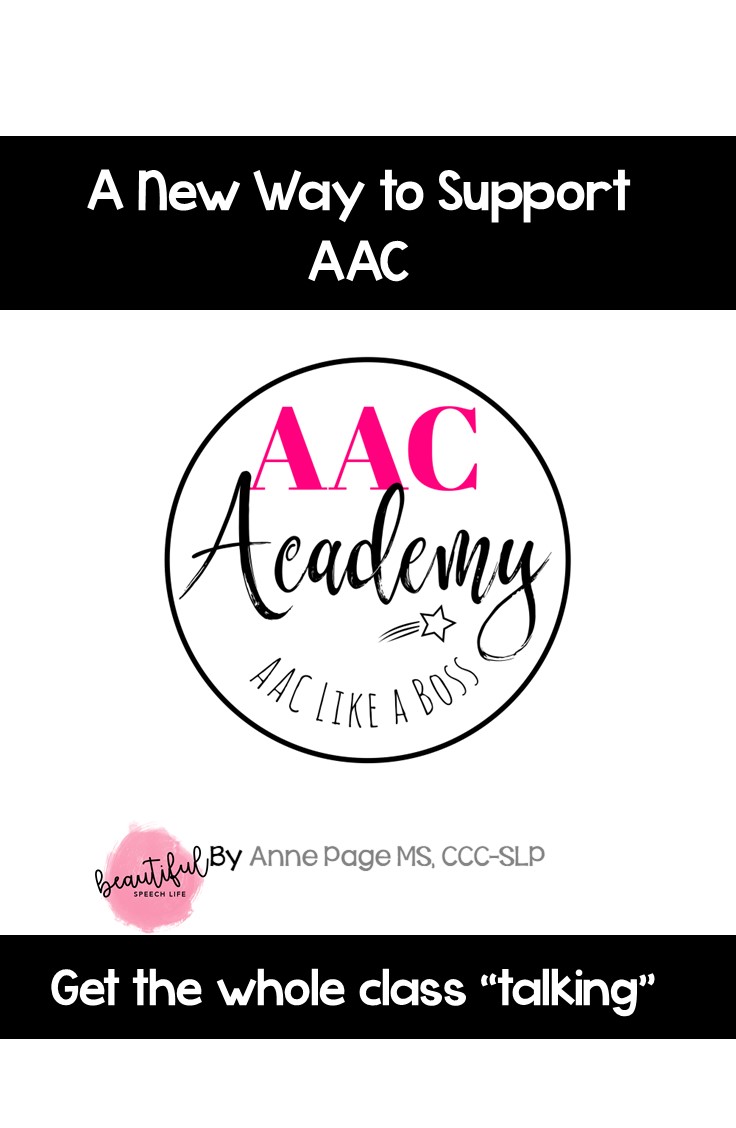AAC core boards combine pictures and words of core vocabulary to support communication. Core vocabulary is vocabulary that is commonly used such as “You”, “I”, “Get”, “Do” and “Where”. Core vocabulary refers a small number of words that make up >70-90% of what we say on a daily basis. While many of the AAC apps have core words built in, there are also low tech options that can be printed out and glued to poster board.
In using core boards we point to the words while we’re talking. We say things like “want more?” “you like it”. They are wonderful tools for modeling.
We’re giving each child a visual that they can see and eventually point to. The words will always be in the same place (so they don’t have to search for them). The visual cue helps the student identify the word and by combining the visual with a written word, we can start to increase a student’s literacy as well.
Tips for using core boards
- Do it consistently. Use the core board every day. The vocabulary on the core board is intentionally selected as words that your child will use regularly. By focusing on these words we are teaching a functional vocabulary. Your child can use these words all day, everyday, everywhere: from classroom to playground to cafeteria to home.
- Start by modelling them. At first don’t expect your child to point to words, it’s enough for you to model them, so they can hear and see them. Be patient.
- Use it for more than requesting. We often start with “I want” as there is a lot of motivation for students to ask that question. But we don’t want that to be the only thing they learn. Start modelling other phrases such as “I like” or “I go” to encourage communication.
- Do fun activities. Think of ways that you can use the core board for fun activities.
- In being helpful, don’t forget to model. Sometimes we’re so busy being helpful we miss great modeling opportunities. If a student is asking you for help with something, rather than simply helping them, whip out the core board and model the word help without demanding an immediate response.
- Use expectant pauses. Are you letting your student say what they want to say and leaving expectant pauses? Or are you trying to make your student say what you want him to say. Make sure you give your student time to think and answer.
- Model mistakes. We need to model making mistakes and how to repair them too. Just like learning to walk, it’s okay to stumble and fall. As long as you keep going.
To start or build on using core boards, I’ve put together a document setting out where you can download free core boards to get you started. Click here to download your copy.
Pin to read later:



 Hey there I’m Anne Page. I help heart centered SLPs and educators put the fun in functional communication.
Hey there I’m Anne Page. I help heart centered SLPs and educators put the fun in functional communication. 